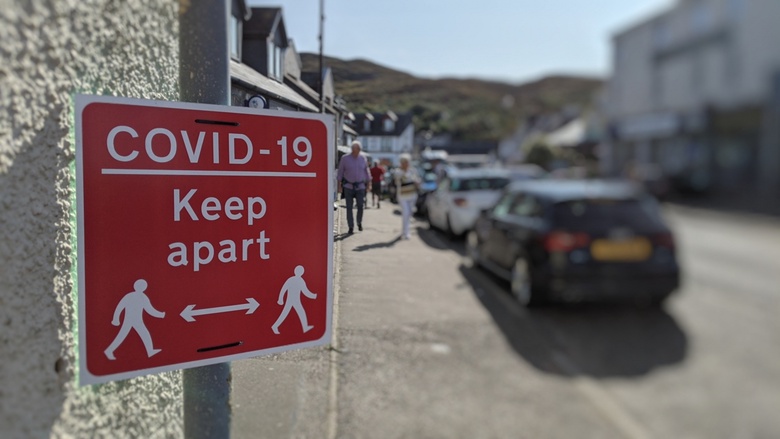
The COVID-19 pandemic arrived in countries around the world in early 2020. Many governments, including those across the United Kingdom, introduced lockdowns to help slow the spread of the virus and protect healthcare systems.
At that time, the impacts of lockdowns on people’s lives, the economy and the healthcare system were unknown, as was public opinion about lockdowns. There was a need for research to explore the impacts and the trade-offs people were willing to accept.
This blog post is part of a series that presents our research into public preferences for lockdowns. Previous posts have shown how we designed the study and showcased our initial results. In this post we compare lockdown preferences across the four home nations. These results were recently published in the BMJ Open journal.
What did we do and how?
We carried out a UK-wide survey of 4201 people living in England, Northern Ireland, Scotland and Wales. We used a discrete choice experiment (DCE) to find out their preferences for lockdowns.
In the DCE survey we ask people to make trade-offs between different options. In this way, we can find out what people value. DCEs are described in this short HERU video.
We asked people a number of questions. In each question, people choose between two different lockdowns for a future pandemic of a (COVID-like) infectious disease. Below is an example question from our survey.
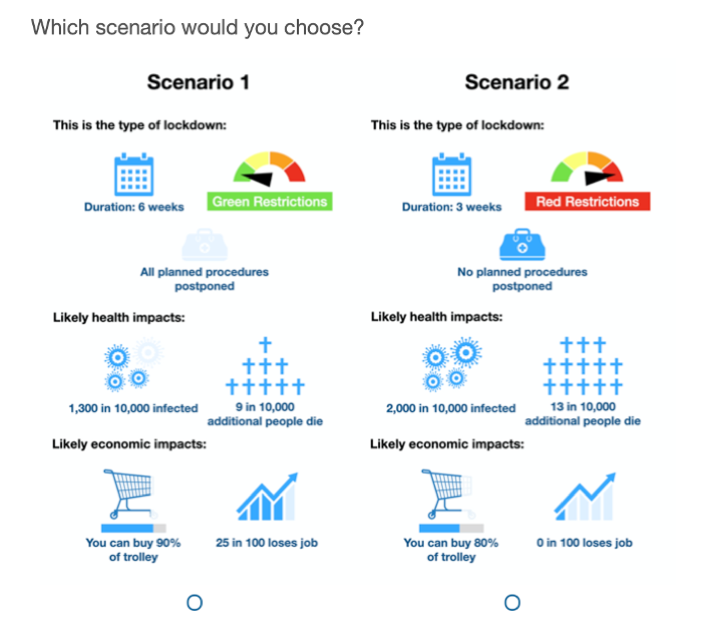
We asked people to trade-off between different lockdown features, health impacts and socio-economic impacts. From the choices that people make, we can work out what is important to them and how important it is. For example, we can find out how many excess deaths would have to be saved for people to accept a strict lockdown or how many excess deaths they would be willing to accept to have lockdown eased.
Our findings?
We first considered if people were willing to accept a stricter lockdown to reduce the number of excess deaths. We found that 20% of people always chose the lockdown to keep the number of excess deaths as low as possible. This percentage was similar across the four UK nations.
This meant that around 80% of people were willing to trade off between the different lockdown features. These people were willing to choose less strict lockdowns that have more excess deaths.
We then assessed the relative importance of each lockdown feature in terms of the number of excess deaths individuals would accept for lighter lockdowns. We found differences across the four UK nations.
Overall and as expected, people preferred lockdowns that are less severe. That is, lighter restrictions that last for less time and do not postpone routine healthcare procedures. They also prefer lockdowns in which the health and economic effects are as small as possible.
People in England were the most opposed to strict lockdowns, followed by Scotland, Northern Ireland and Wales. In other words, people in England were willing to accept more excess deaths in exchange for a less strict lockdown compared to people in the other home nations.
To show this, we compare the maximum number of excess deaths that would be accepted to introduce different lighter (but longer) lockdowns, compared to a strict circuit-breaker four-week very restrictive lockdown.
As the lockdowns become less restrictive, more excess deaths were acceptable. However, the values differ across the four nations, and England accept more excess deaths than the other nations. The figures below show that as the lockdowns become less restrictive, more excess deaths were acceptable. However, the values differ across the four nations, and England accept more excess deaths than the other nations. For example, for the least restrictive lockdown (yellow lockdown for eight weeks with no routine healthcare postponed) those living in England would accept 3.63 deaths per 10,000 population. This reduces to 2.41 per 10,000 in Scotland, 2.23 per 10,000 in Northern Ireland 1.10 per 10,000 in Wales.
England

Scotland
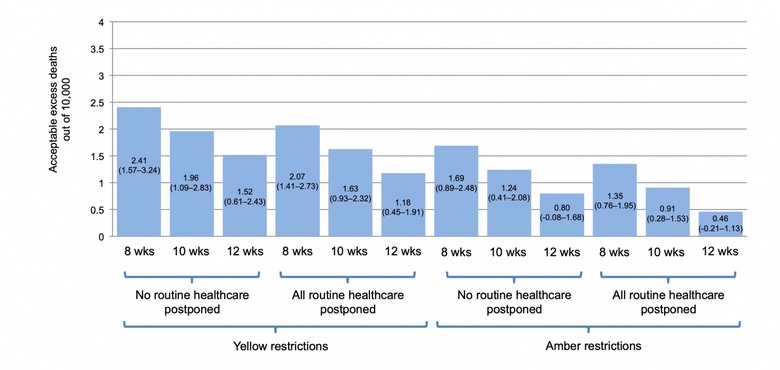
Northern Ireland
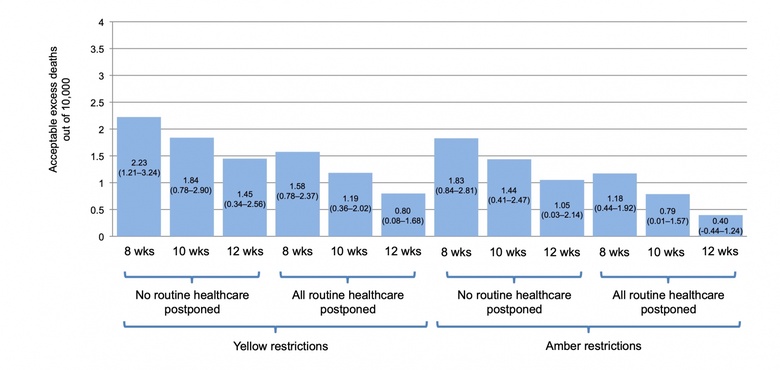
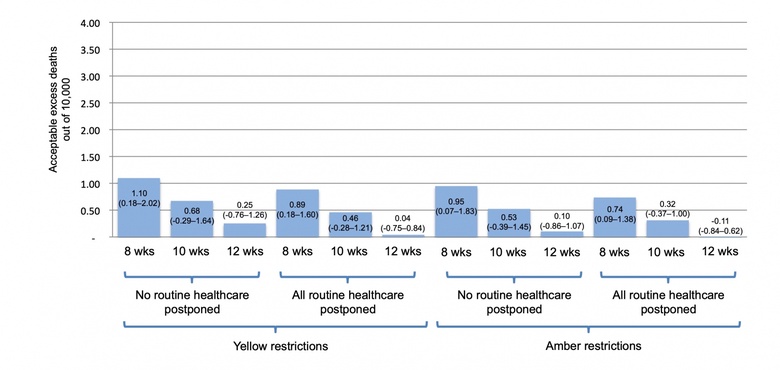
The effectiveness of lockdowns depends on public compliance and buy-in. We hope our research can provide valuable input to these discussions. This is only one output from our wider study. We expect to have further updates soon. Stay tuned.
Loría-Rebolledo, L.E., Ryan, M., Watson, V., Genie, M.G., Sakowsky, R.A., Powell, D. and Paranjothy, S. (2022) 'Public acceptability of non-pharmaceutical interventions to control a pandemic in the UK: a discrete choice experiment', BMJ Open, 12(3), e054155.
Thanks to Luis Loría Rebolledo, Verity Watson and Mandy Ryan for compiling this blog post.
HERU is supported by the Chief Scientist Office (CSO) of the Scottish Government Health and Social Care Directorates (SGHSC). The views expressed here are those of the Unit and not necessarily those of the CSO.


